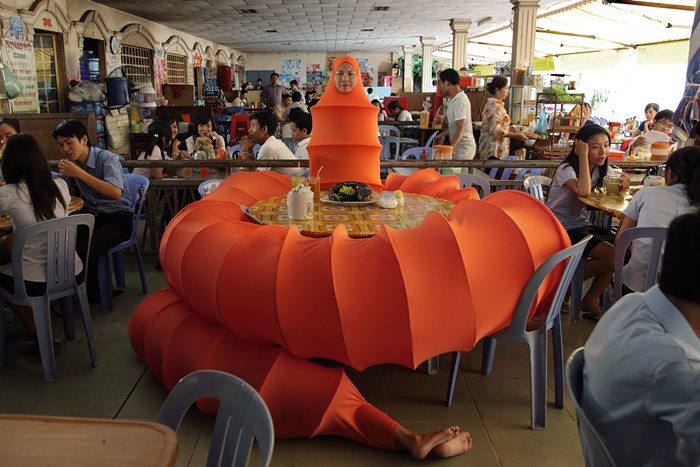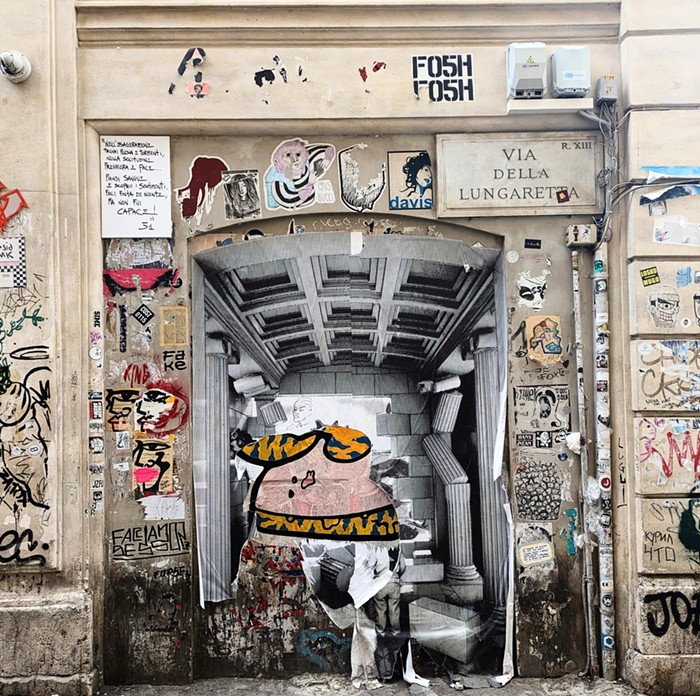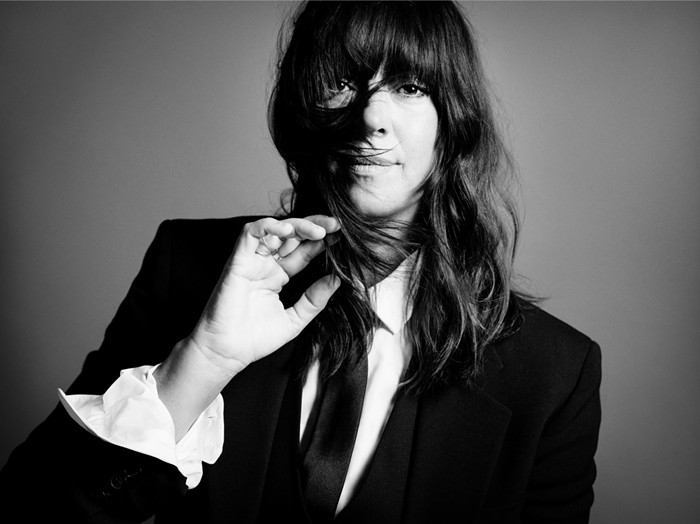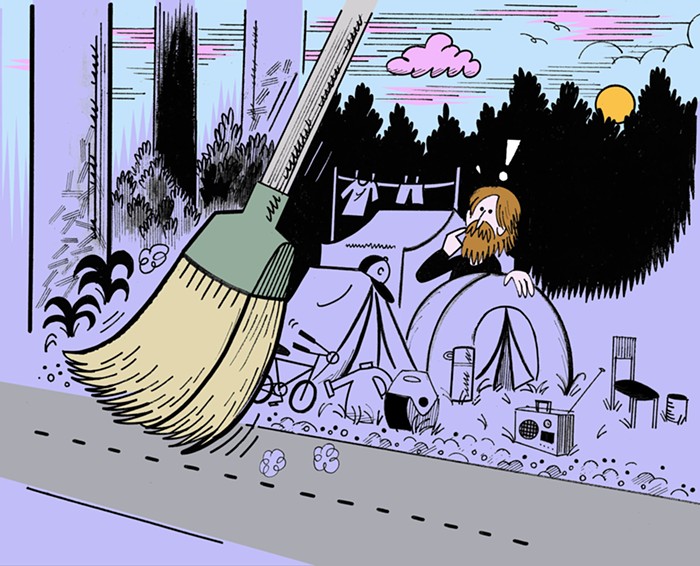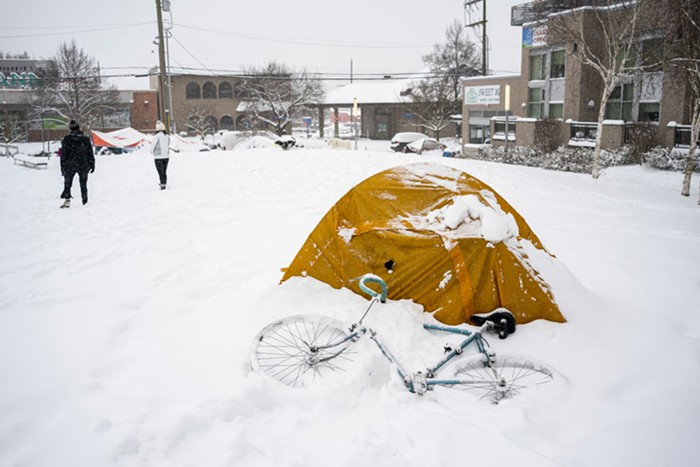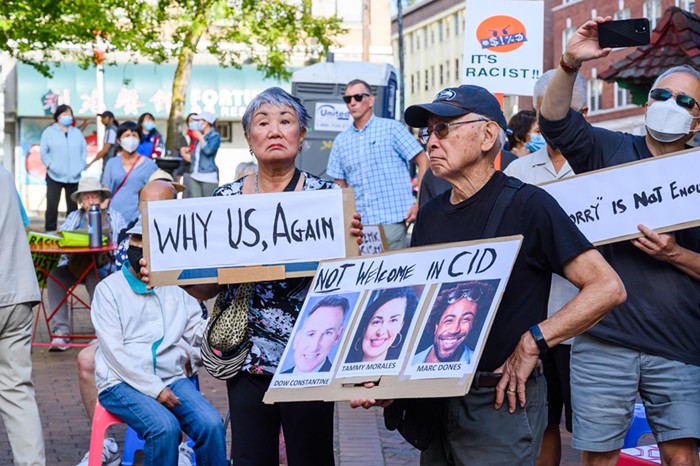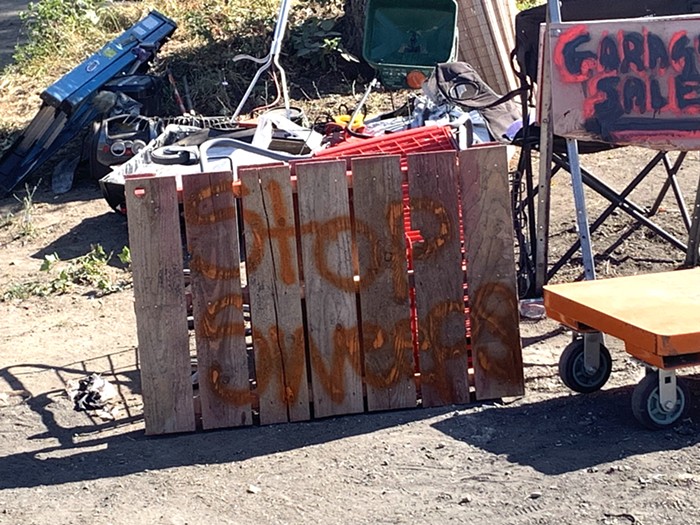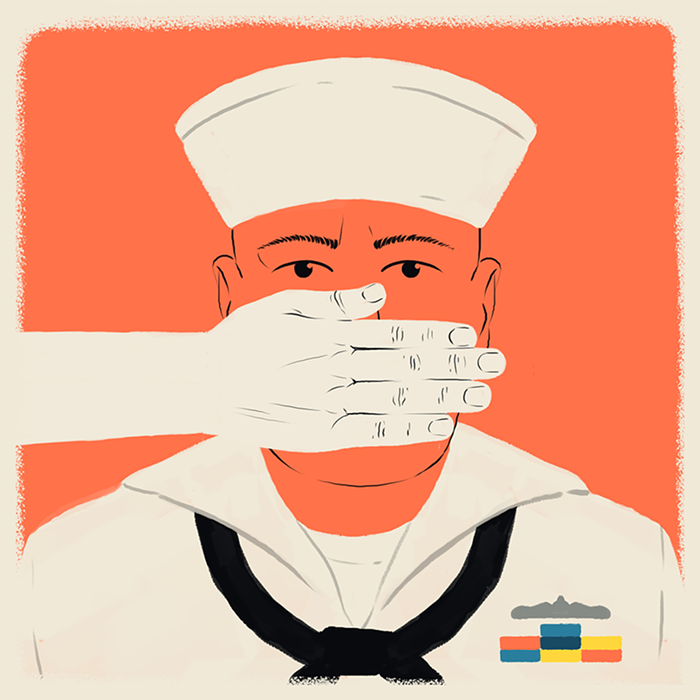At times, political art prods at history's more untenable moments--as did the famous Vietnam-era protest poster by the Art Workers Coalition (a sepia-toned photograph of dead children strewn across a dirt road, with a caption reading, "Q: And babies? A: And babies"). Or it's helped solidify and radicalize a movement; Keith Haring's posters and graffiti at the beginning of the AIDS crisis is one instance. In some cases, it simply reflects on mass horrors (Picasso's Guernica).
Last year I curated The Whole World Is Watching: Art, Images, and Literature from the WTO Protests, and found myself having to determine the slippery criteria for political art. I asked three questions: Is it art? Is it political? Is it political art? Each question was as problematic as it was helpful. The first two have so many shades of interpretation, and the last is just loaded, depending who's asking and what they're asking it of. There was also the question of intent: Was the work meant to be part of a political action? Was it a reflection of an event? Or was it a work whose meaning changed retrospectively because of the event? Since few pieces answered all three questions in the affirmative, I ended up with less and less work.
The last question--of context and meaning--proved to be the most interesting. At the IMF/World Bank protests in Washington, D.C. that followed the Seattle WTO protests, the police seized giant puppets from activist headquarters and, essentially, imprisoned them. This was, and is, laughable. What harm can a happy papier-mâché sun-face do? But benign objects become politically charged in such contexts. Friese Undine's Take Off the Head, a series of nearly 1,000 tiny portraits of key international political figures, was painted well before the protests, but became retrospectively timely. I included Head in the show because it offered an answer to a question that the protests articulated: Who are those people, behind closed doors, determining the world we live in?
I'm thinking about these questions as I anticipate the avalanche of work, by artists and non-artists alike, that will be created to address what happened on September 11. Meaning is more self-defined than it ever was. Take Leslie Clague's charcoal images of airplanes serenely banking in the nighttime sky. They haunted me the first time I saw them at Fuzzy Engine over a year ago, because a friend of mine had died in the Alaska Airlines crash. Now they seem sinister and foreboding, the more so because the drawings were shown with a handmade safety vest that was both constricting and impossible to get into (or out of). At Jim Blanchard's recent Roq la Rue show, a friend of mine was elated, and a tad chagrined, to buy a portrait of Steve McQueen. This piece of pure pop iconography symbolized, to her, an America that no longer exists, a hero that serves as a patron saint of sorts, familiar, safe, secure.
A scan of the public landscape shows our immediate political/aesthetic reaction: the treatment of the American flag as both décor and art object. Everything now is red-and-white-striped and starry. The flag finds itself in both highbrow and lowbrow interpretations, backlit on a darkened balcony, constructed out of electrical tape on a truck grille, wrapped as a scarf around a garden statue. Department stores are blooming with entirely out-of-season patriotic wares and wear.
Artists must certainly be tempted to address this overwhelming visual addition to our landscape, but it's a risk to do so. A new McCarthyism is sweeping the country, a fervent nationalism that makes freedom of speech irrelevant. If history repeats itself, artists are sure to be the next people censored for expressing even remotely anti-American sentiments (academics are already being chastised).
In the meantime, I am tempted by random acts of art. Recently I was in a record store, and I came across a CD with two tall buildings on its cover, and another with an airplane flying across it. I placed them side by side on a shelf, looked around to see if anyone had noticed, and then quickly left.
